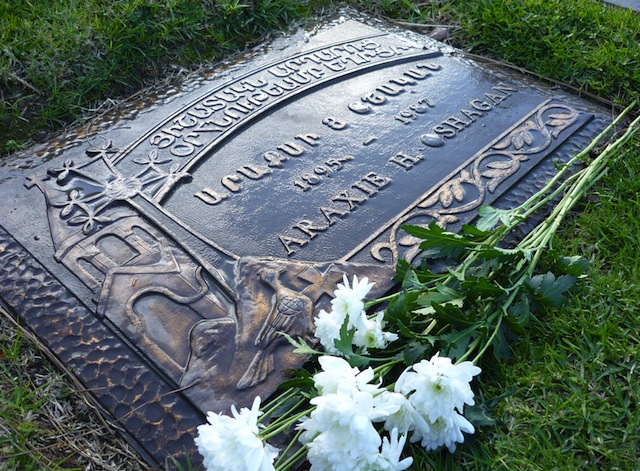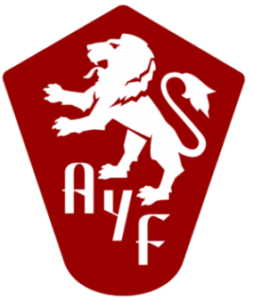Men in Black in Little Armenia
By Tamar Salibian
In 1915, over 1.5 million Armenians were removed from their homes and subsequently massacred by the Ottoman Turks in what is known as the Aghed (catastrophe) or the Armenian genocide. Each year, April 24 is the day when Armenians around the world remember the death of their ancestors under the brutal hand of the Ottoman Turkish government. The year is 2007, this year, the cloudless sky and warm California weather made for an apt setting to commemorate April 24 in Los Angeles’ Little Armenia. Thousands of Armenians prepared to meet near the corner of Hollywood Boulevard and Hobart Street for a commemorative march across town.
I awoke to the sound of my alarm clock blaring at 8:30 and immediately rolled over to try to sleep for a few more minutes. “I’ll make it in time, it starts at 10,” I thought to myself as I drifted back into slumber.
Awaking with a start at 9:08, I jumped out of bed and proceeded to search for an outfit that was somber enough for the day’s events yet comfortable enough to walk around in. Black slacks, black shoes, charcoal grey tee shirt, done.
At Turkish scholar Dr. Taner Akcam’s lecture at Glendale Community College the previous day, I’d been bombarded with paraphernalia for the April 24th events, yet I did not choose to wear my new “1915: Stop the Denial” tee shirt, nor did I affix the “Boycott Turkey” bumper sticker to my car that I’d been given as I left the lecture where Dr. Akcam attempted to promote dialogue between Armenians and Turks. I wondered if the students who abruptly left Dr. Akcam’s lecture early were given the “Boycott Turkey” bumper stickers or if the stickers were only awarded to those who stayed until the end of the presentation.
Running to my car, I quickly made it to the 101 South and exited at Hollywood Boulevard where I was suddenly stopped in my tracks by a massive traffic jam.
“It’s to be expected today,” I thought as I took the time to look around at the people in their cars in Little Armenia. BMW’s, Mercedes Benzes and other opulent cars were adorned with Armenian and American flags. I chuckled, wondering if the tourists across the street thought there was a soccer match going on because of all of the fanfare. A black BMW with tinted windows passed me and I noticed a group of young men, cleanly shaven with shorn hair and black 1915 tee shirts, laughing and watching intently as a group of young girls in tight blue jeans and platform sandals walked towards the march. The search for parking seemed endless but I finally found a spot near Hollywood on Edgemont.
The air was thick with the pungent scent of hair gel and aftershave. Old men stood on the street corners awaiting the start of the event. In the distance, I could already hear the chanting of the crowd. “What do we want? Justice! When do we want it? Now! Shame on Turkey! 1915, never again!” A group of men stood nearby smoking cigarettes and watching the crowd as many young Armenian boys and girls with gelled hair, Jamba Juice and Starbucks drinks and T-Mobile Sidekicks attached to their hands as if with Krazy glue walked around sending text messages and laughing with each other. The social aspect of such events was to be expected and yet the longer I watched the crowd, the less I wanted to stay.
At the head of the march was a group of Armenian archbishops and priests who solemnly walked without chanting. Their presence was in stark contrast to the general public who, with fists raised, chanted, yelled and screamed. As the crowd reached Normandie Avenue, the religious leaders quietly stepped away from the crowd, passing me to disappear from the march. The yelling started to give me a headache.
Sure, I want justice like any other self-respecting Armenian whose ancestors survived the genocide. My maternal grandfather was rescued from under a pile of corpses as an infant and spent his entire life in silence trying to live under a shadow he never discussed. Yet this tragedy is something that I wish to remember in a different way.
I want to mourn the dead rather than hold up slogans and walk down avenues as though I were part of a parade. I felt the anger rising up in my chest. Are we Armenians replacing the commemorative root of this day with a kind of bravado mob mentality? Was it ever any different? “What would happen,” I thought to myself, “if all of a sudden the genocide magically did receive worldwide recognition? What would our agenda be then?” Sensing that my frustration might lead me to say or do something I would regret, I turned and walked back toward my car. But it wasn’t time to go home.
What did I really want today to be about? I got in my car and drove east on Hollywood, North on Vermont, onto the 5 and then to the 134 until I reached the place that I knew was the right place to be on this day.
Forest Lawn Cemetery welcomed me with its quiet, its calm and its simple, somber atmosphere. I picked out a bouquet of white flowers in the flower shop and made my way up through the grounds. “Akh medzmayrig, oor es?” (“Great-grandma, where are you?”) I whispered to myself as I trudged through the grass in search of my great-grandmother Araxie Oshagan’s grave. “Eem havidenagan hartsus” (“My eternal dilemma”) I thought, as I remembered the same search for her grave I have each time I visit this cemetery. Was it two rows down from the stone bench or two rows up? Damn it, should I call my cousin for directions?
And then, I found her. The emotions arose within me as I slowly began to wash her gravestone with water and arrange the flowers I had bought.
Araxie Astardjian was born in Bulgaria in 1895. As a young teen, she met her future husband when on one cold night, the writer Hagop Oshagan knocked on her parents’ door asking if they could put him up for the night. From Bulgaria all the way to her death in Los Angeles in 1987 just two weeks after moving to the US, my medzmayrig’s life was one full of trauma, strength, pride and loss.
I remembered how she would sit in the corner of her room, her head turned to look out the window, searching for the ghosts of her long-lost husband and family members. I noticed a car pass by with an Armenian flag attached to its passenger window. A solemn family exited the car to pay their respects to their loved ones at the cemetery. Slowly, I realized that all was not forgotten.



Leave a Reply
Want to join the discussion?Feel free to contribute!